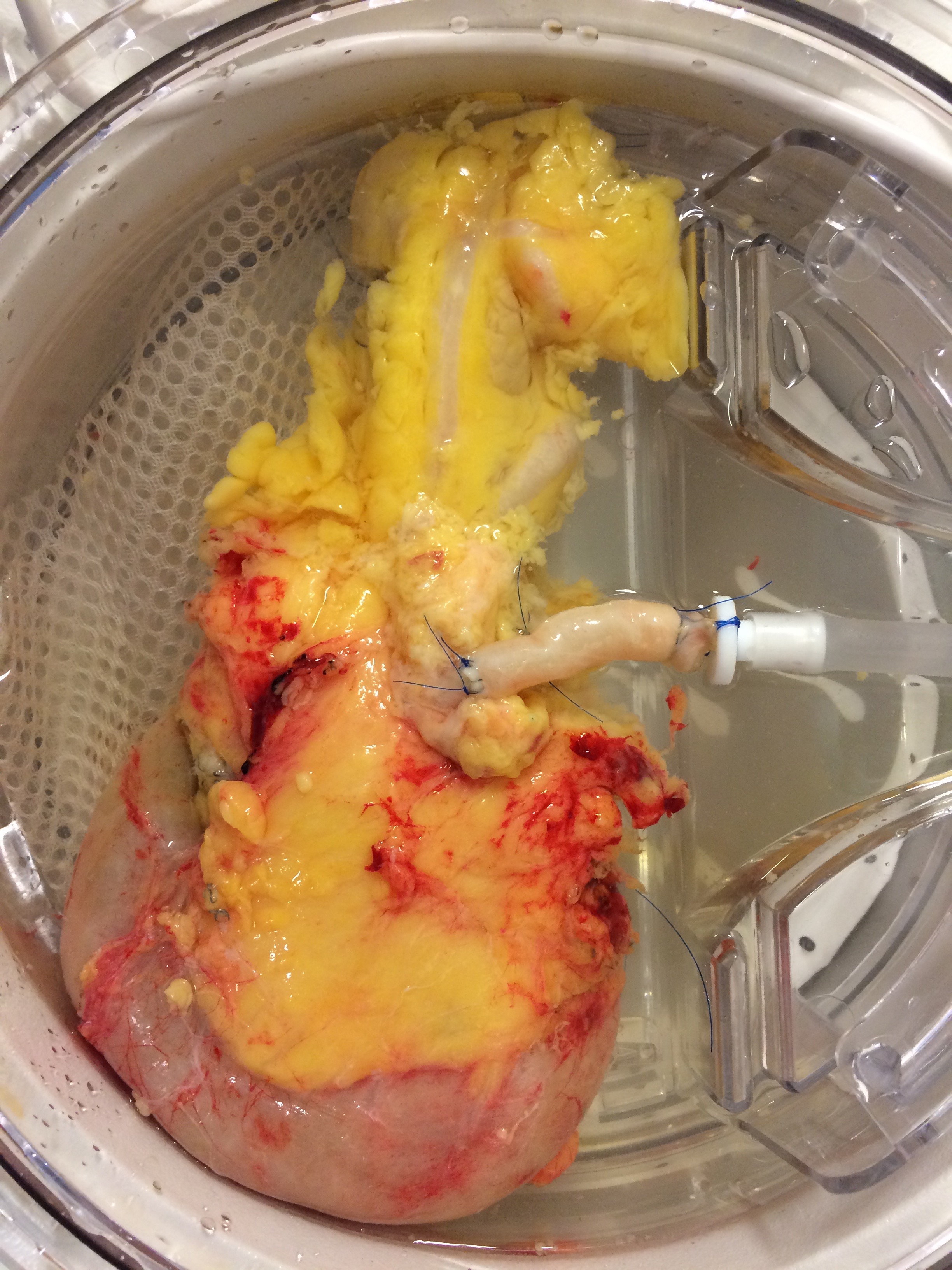Hypothermic Pulsatile Machine Perfusion for Human Pancreas Preservation.
Institute of Transplantation Urology, and Nephrology, Nantes University Hospital, Nantes, France
Meeting: 2017 American Transplant Congress
Abstract number: C206
Keywords: Machine preservation, Pancreas transplantation
Session Information
Session Name: Poster Session C: Pancreas and Islet (Auto and Allo) Transplantation
Session Type: Poster Session
Date: Monday, May 1, 2017
Session Time: 6:00pm-7:00pm
 Presentation Time: 6:00pm-7:00pm
Presentation Time: 6:00pm-7:00pm
Location: Hall D1
Pancreas transplantation is one of the best treatment for selected insulin-dependent diabetic patients. The pancreas is high vulnerable to ischemic damage and re-perfusion injury which could end into graft pancreatitis and thrombosis. Static cold storage is the only preservation method for pancreas preservation.
Hypothermic machine perfusion (HMP) has proved its value in preserving kidney transplants. Whether HMP is a safe procedure for human pancreas preservation is unknown. The first pancreas pulsatile perfusion was done in canine pancreas autografts in the eighties; this was a high pressure perfusion and induced severe edema. Today, there is no clinical study designed to investigate the impact of HMP on human pancreas allografts.
In our pre-clinical study, 9 human pancreas from deceased heart beating donors excluded for clinical transplantation were used and perfused with the Wave (Waters Medical Systems) perfusion machine. Pancreas were prepared identically as for human vascularized organ transplantation. The splenic artery and superior mesenteric artery were anastomosed to an iliac artery division. All pancreas were perfused with a pressure of 25 mmHg  . Tissue biopsies were collected at baseline and after 6, 12 and 24 hours of HMP. Histology did not demonstrate edema after 6, 12 hours; some edema was observed at 24 hours. Duodenum villi were unaltered up to 24 hours of perfusion. Insulin, glucagon and somatostatin staining was invariable throughout follow-up.
. Tissue biopsies were collected at baseline and after 6, 12 and 24 hours of HMP. Histology did not demonstrate edema after 6, 12 hours; some edema was observed at 24 hours. Duodenum villi were unaltered up to 24 hours of perfusion. Insulin, glucagon and somatostatin staining was invariable throughout follow-up.
Marginal human pancreases preserved under hypothermic pulsatile conditions did not experience edema after 12 hours or perfusion. This procedure was feasible and safe in all cases. Our next challenge will be to transplant them.
CITATION INFORMATION: Branchereau J, Renaudin K, Cantarovich D. Hypothermic Pulsatile Machine Perfusion for Human Pancreas Preservation. Am J Transplant. 2017;17 (suppl 3).
To cite this abstract in AMA style:
Branchereau J, Renaudin K, Cantarovich D. Hypothermic Pulsatile Machine Perfusion for Human Pancreas Preservation. [abstract]. Am J Transplant. 2017; 17 (suppl 3). https://atcmeetingabstracts.com/abstract/hypothermic-pulsatile-machine-perfusion-for-human-pancreas-preservation/. Accessed December 1, 2025.« Back to 2017 American Transplant Congress
